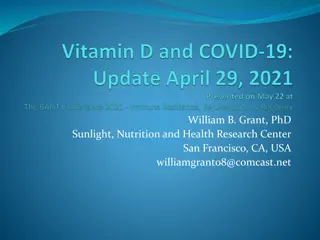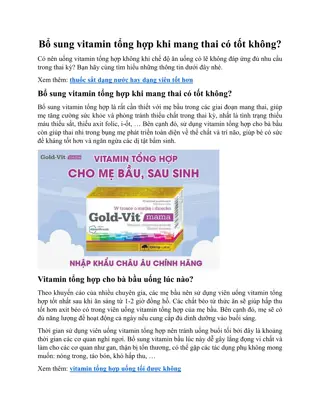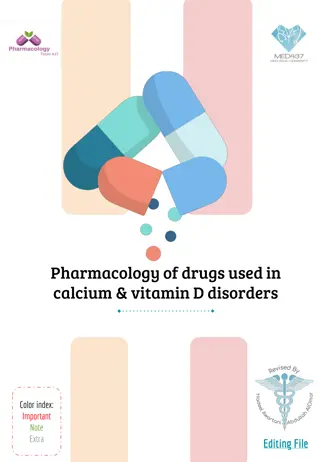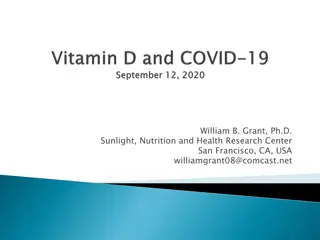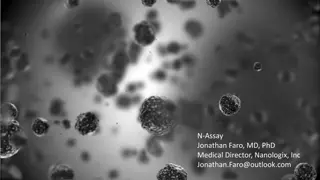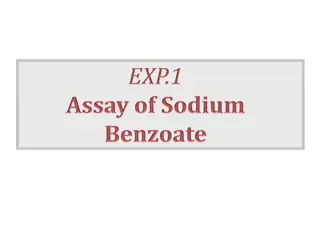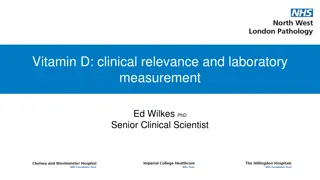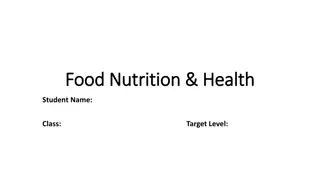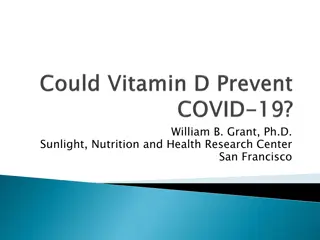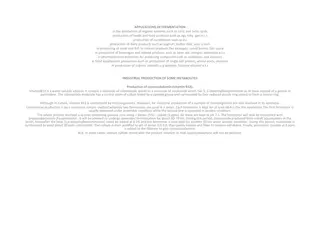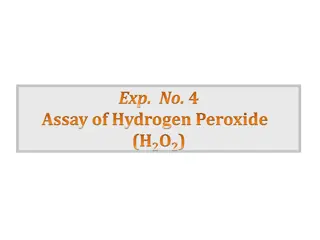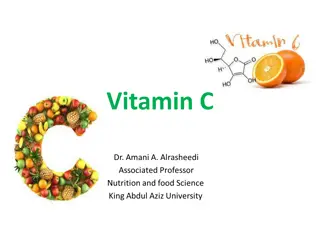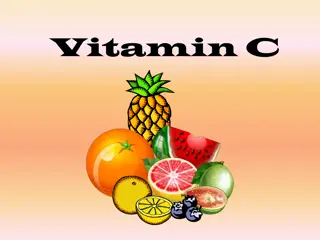Assay of Ascorbic Acid (Vitamin C) - Method and Procedure
Ascorbic acid, known as Vitamin C, is a crucial organic compound with antioxidant properties. This article discusses the assay of ascorbic acid using a redox titration method with potassium iodate and iodide. The principle, procedure, and calculations involved in determining the concentration of Vitamin C in a solution are outlined. Detailed explanations of the chemical reactions and practical steps for conducting the assay are provided, emphasizing the importance of this essential nutrient in human nutrition.
Download Presentation

Please find below an Image/Link to download the presentation.
The content on the website is provided AS IS for your information and personal use only. It may not be sold, licensed, or shared on other websites without obtaining consent from the author. Download presentation by click this link. If you encounter any issues during the download, it is possible that the publisher has removed the file from their server.
E N D
Presentation Transcript
Assay of Ascorbic Acid (Vit. C) Lecturer Luma Amer 2018-2019
INTRODUCTION: Ascorbic acid (Vitamin C), molecular formula (C6H8O6) is a naturally occurring organic compound with antioxidant properties It is a white solid, but impure samples can appear yellowish. Its melting point ( 190 C) with decomposition. It dissolves well in water to give acidic solutions and sparingly soluble in ethanol. Ascorbic acid solution rapidly oxidized in air and alkali media. many animals are able to produce it (as a hormone), but humans require it as part of their nutrition.
Ascorbic acid is a strong reducing agent and it is assayed by titration with iodine solution.
PRINCIPLE: This method determines the vitamin C concentration in a solution by a redox titration with potassium iodate in the presence of potassium iodide. Ascorbic acid is a reducing agent and can be oxidized to form dehydroascorbic acid by iodine. while iodine is reduced to iodine ion. Ascorbic acid + I2 2 I + dehydroascorbic acid
a) KIO3 +5KI + 6HCl 3I2 + 6KCl + 3H2O b) I2 + C6H8O6 C6H6O6 + 2I- +2H+ Due to this reaction the iodine formed is immediately reduced to iodide as long as there is any ascorbic acid present. Once all the ascorbic acid has been oxidized, the excess iodine is free to react with the starch indicator, forming the blue-black starch-iodine complex. This is the endpoint of the titration
Explanation of equation (a) KIO3 +5KI + 6HCl 3I2 + 6KCl + 3H2O - The iodate ions are reduced to form iodine. IO3 + 6 H+ + 5 e I2 + 3 H2O - While the iodide ions are oxidized to form iodine. 2I I2 + 2 e Combining these half-equations demonstrates the reaction between iodate and iodide. 2 IO3- + 10 I + 12 H+ 6 I2 + 6 H2O
PROCEDURE: 1. Fill the burette with 20 ml of KIO3 . 2. Transfer 5 ml of unknown solution to the conical flask. 3. Add 1 ml of HCl +1 ml of potassium iodide KI. 4. Add 1 ml of 0.1 N potassium iodate solution KIO3 from burette . 5. Add 1ml of starch indicator. 6. Complete titration with KIO3 until end point , endpoint of the titration is the first permanent trace of a dark blue- black color. 7. Calculate the practical wt.
CALCULATIONS: Calculate the weight of the sample(Vit C) The mass for ascorbic acid was 176 g/mole? a) KIO3 +5KI + 6HCl 3I2 + 6KCl + 3H2O b) I2 + C6H8O6 C6H6O6 + 2I- +2H+


